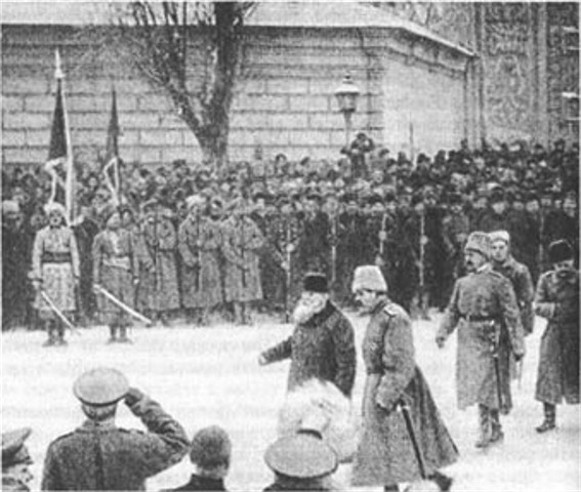Free Cossacks
Free Cossacks (Вільне козацтво; Vilne kozatstvo). Ukrainian volunteer militia and military formations in 1917–18, which arose spontaneously at the outset of the Ukrainian struggle for independence (1917–20) and organized themselves at a congress in Zvenyhorodka in Kyiv gubernia in April 1917. Their purpose was ‘to defend the liberties of the Ukrainian people’ and to maintain civil order, which was threatened by bands of Bolshevik-inspired deserters. The units were organized by territory: villages provided companies; the companies of a volost constituted a kurin (battalion); the kurini of a county, a regiment; and the regiments of a region, a kish (division). The officers were elected. Arms were purchased from funds that were provided by taxes. In 1917 the Free Cossack movement spread through Kyiv gubernia, Volhynia gubernia, Kherson gubernia, Poltava gubernia, and Chernihiv gubernia. The troops consisted mostly of peasants, but also included workers, particularly in Kyiv. The All-Ukrainian Congress of Free Cossacks in Chyhyryn on 16–20 October 1917 represented 60,000 organized Cossacks. General Pavlo Skoropadsky was elected otaman of the Free Cossacks. The acting otaman was Ivan Poltavets-Ostrianytsia.
Until January 1918 the General Council of the Free Cossacks in Chyhyryn was subordinate to the Ukrainian National Republic General Secretariat of Internal Affairs and then to the Secretariat of War. With the outbreak of the Ukrainian-Soviet War, 1917–21, the General Secretariat of the Central Rada decided to turn the Free Cossacks into a territorial army. The Free Cossacks played an important role in battles with the Bolsheviks, particularly in the southern Kyiv region. In March–April 1918 the Free Cossacks were disarmed in compliance with the demand of the German command. Many Free Cossacks later took part in the insurrection against the Hetman government and the subsequent war against the Bolsheviks.
[This article originally appeared in the Encyclopedia of Ukraine, vol. 1 (1984).]

.jpg)
.jpg)